Don't just stand there - Pass me the rubber ducky. It's bath time!😁
LOL - I never imagined that birds, bee-eaters to be specific, to be so fussy about hygiene! I thought they rolled around in the dust for a 'dust bath' and called it a day.
I, therefore, prided myself to be the better one - because I usually have a shower or a bath every day.
My superiority complex over bee-eaters was shattered one day when I found these bathing beauties !
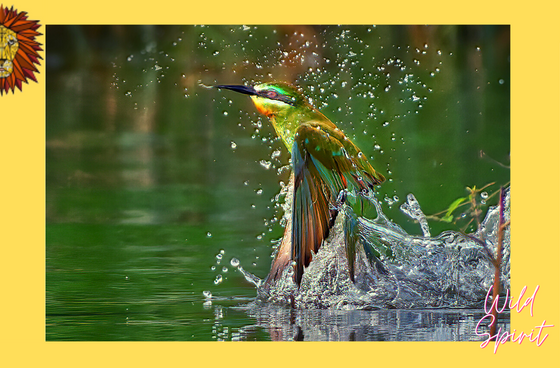
Seeing them is one matter but capturing them on camera was a VERY VERY difficult task.
I was out near a large reservoir one day when I noticed a number of blue-cheeked bee-eaters sitting around on wires. These birds always seem to me like a 'happy-go-lucky' lot who sit around on wires, suddenly take off to do intense maneuvers in air to catch a flying bug and then continue to sit around again.. Seems they do not have any other agenda or a care in the world.
Since catching them sitting on the wire wasn't much of a challenge, I decided to try and get a shot of one of them flying.
Whew - what an ordeal that was. Imagine you are Maverick of Top-Gun trying to locate the enemy Mig-29 in a dog-fight as they whoosh around you in high G maneuvers! Getting my camera to track with these birds as they flew was as difficult as that!
Hundreds of clicks and wasted attempts later, I finally managed to get one of them in a beautiful flight shot! This shot looks great but remember, it had 99 other shots behind it with cut wings, blurred bird, blank frames etc. etc. Talk about shutter count - Thank god I was not shooting a film role like the earlier SLRs. Otherwise I would have gone bankrupt with the cost of film rolls!
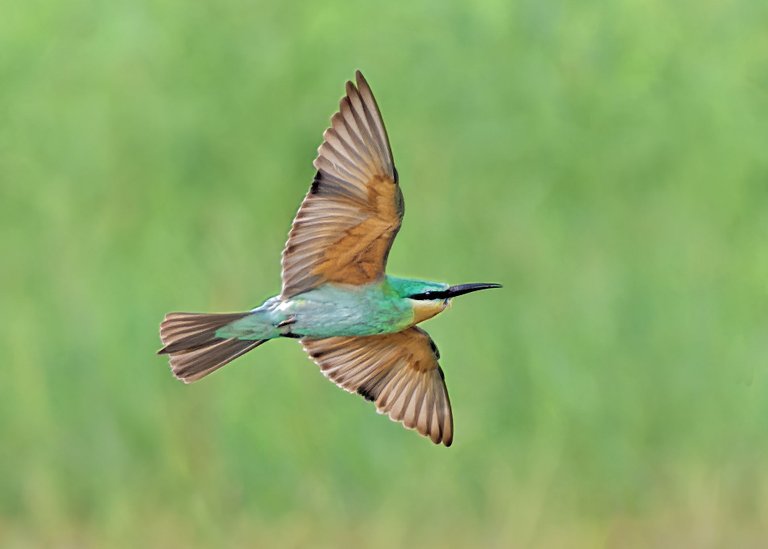
Flying queen!
"Ahhhh - what a click. I am done for the day" thought I. Thinking about hot tea at home already, I started turning away. That is when I heard a 'SPLASH'!
Turning around, I saw these bee-eaters systematically taking turns to take a dip in the water below!
I got my camera ready and tried exactly 273 times to get a shot of them splashing in water!
Success rate? Well an abysmal 2% as I managed to get only 3-4 shots of them diving and splashing out.
However, it was worth it since I managed to capture this rare sighting of bee-eaters taking a dip on camera.
The way these birds dive is spectacular. They swoop down first but they do not approach the water in a straight trajectory. They fly in some really weird, unpredictable and abrupt turns before they suddenly dive head first in an INVERTED dive into water. I just could not believe my eyes and tried my best to capture the moment of dive. It was nearly impossible due to the uncertainty of dive location in the pond and the focus tracking not being quick enough on my zoom lens (a PRIME lens would have been better). However, I managed to get this one shot of the bird diving just as it's head entered water.
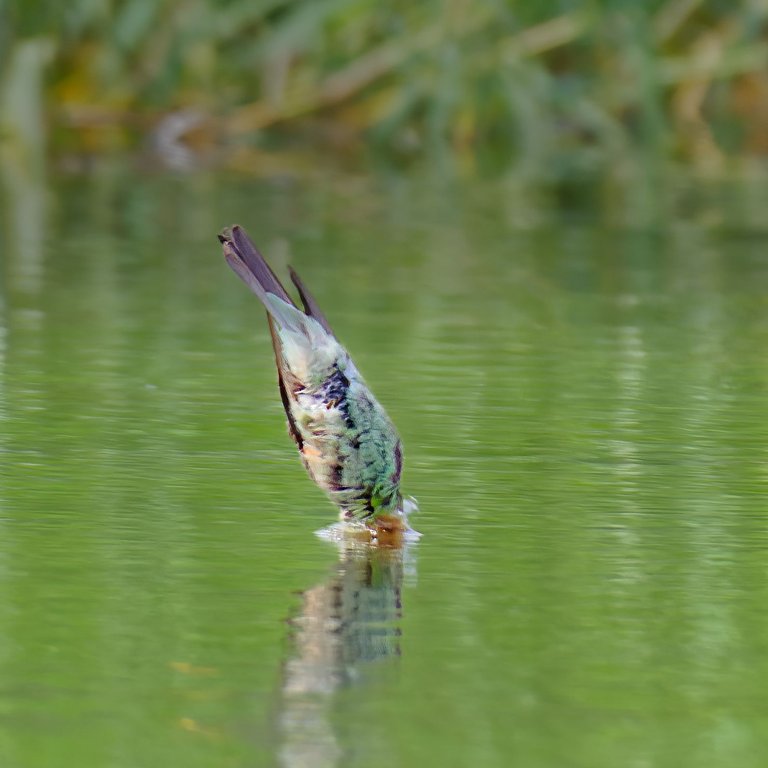
Crazy - right?
The real spectacle is when the bird emerges out of water - wings flapping and shaking off. There is a lot of splashing water and some beautiful droplets that catch the sun. Due to the splash and water droplets, it is very difficult to get focus but I manage to get this one shot ...
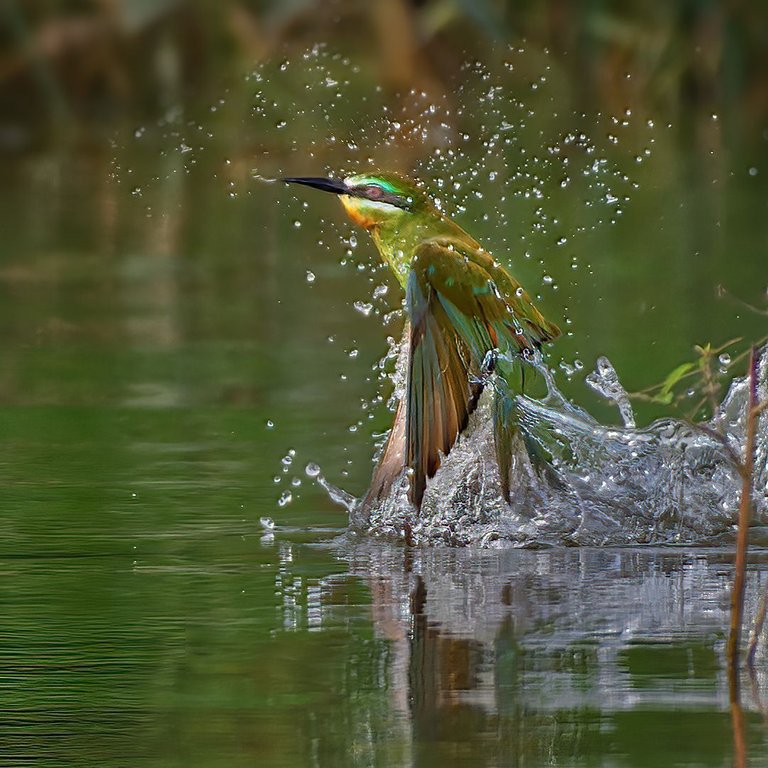
Then, as the bird rises out of the water, there are more pretty droplets flying around plus there are trails of water from the birds tails and wings...
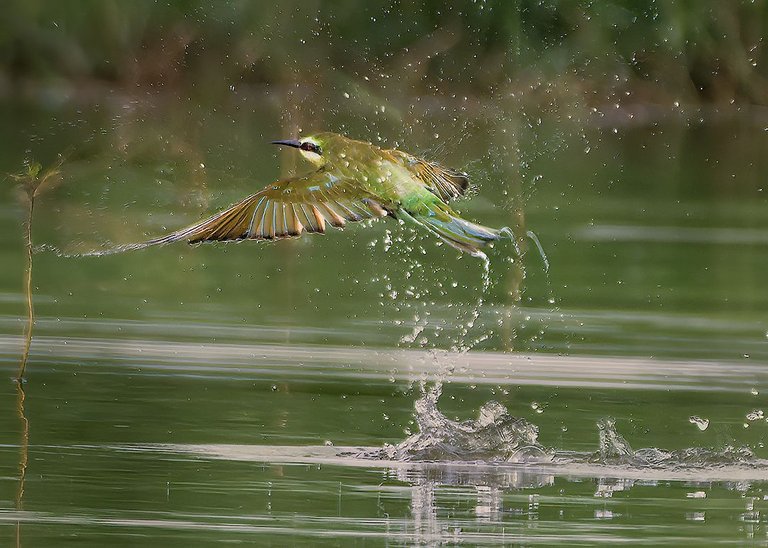
Sometimes the bird shakes itself vigorously just after it emerges from water and we get this crazy view of wings, droplets and feathers in all kinds of contortions-
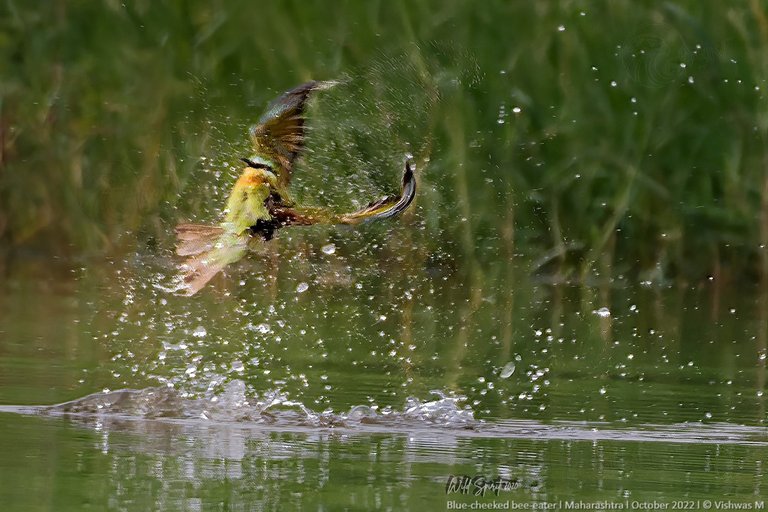
I was lucky to get just one shot with the bird looking at me as it shook itself....
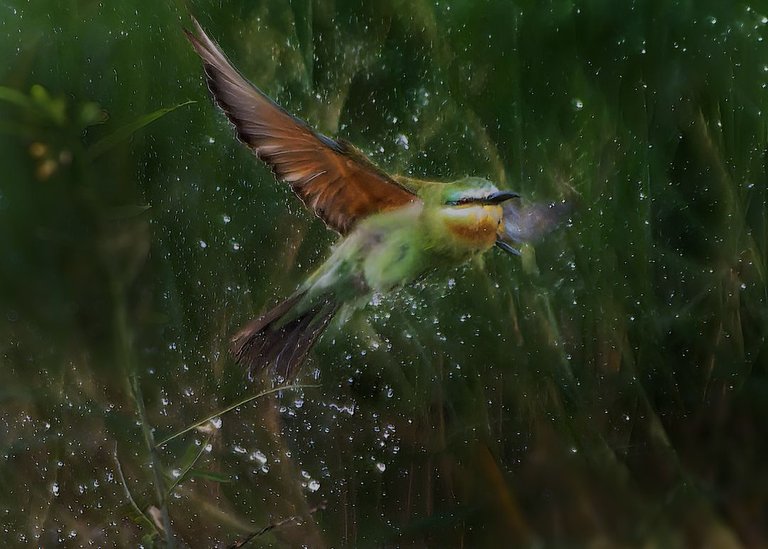
Though it was physically taxing to keep tracking the birds as they twisted, turned and plunged into water, I believe the images were worth all the trouble and pain.
It takes not only skill but also the correct equipment with fast shutter speed capable camera, tripod/monopod etc. and an intimate knowledge of the settings and control etc.
I used following settings on my D500 Nikon + 200-500 Nikkor lens
- Support: Handheld (impossible to track the fast and abrupt movement with tripod)
- Shutter : 1/2000s Most important
- Aperture: 7.1 (for more depth of field than my usual 5.6)
- ISO:800 Higher ISO for higher shutter speed
It took more than 400 shots total for capturing these few images
What do you think ? Do you think it was worth it? Have you attempted or would you attempt anything like this in photography? If so, please share your experience in comments.
Please comment freely and let me know your opinion. I will try to bring many different types of wildlife photos/macro/Astro posts to the community. Feedback and comments are welcome,. I am still learning many techniques and always value feedback from experts in this community.
Have a nice day everyone. Cheers!



